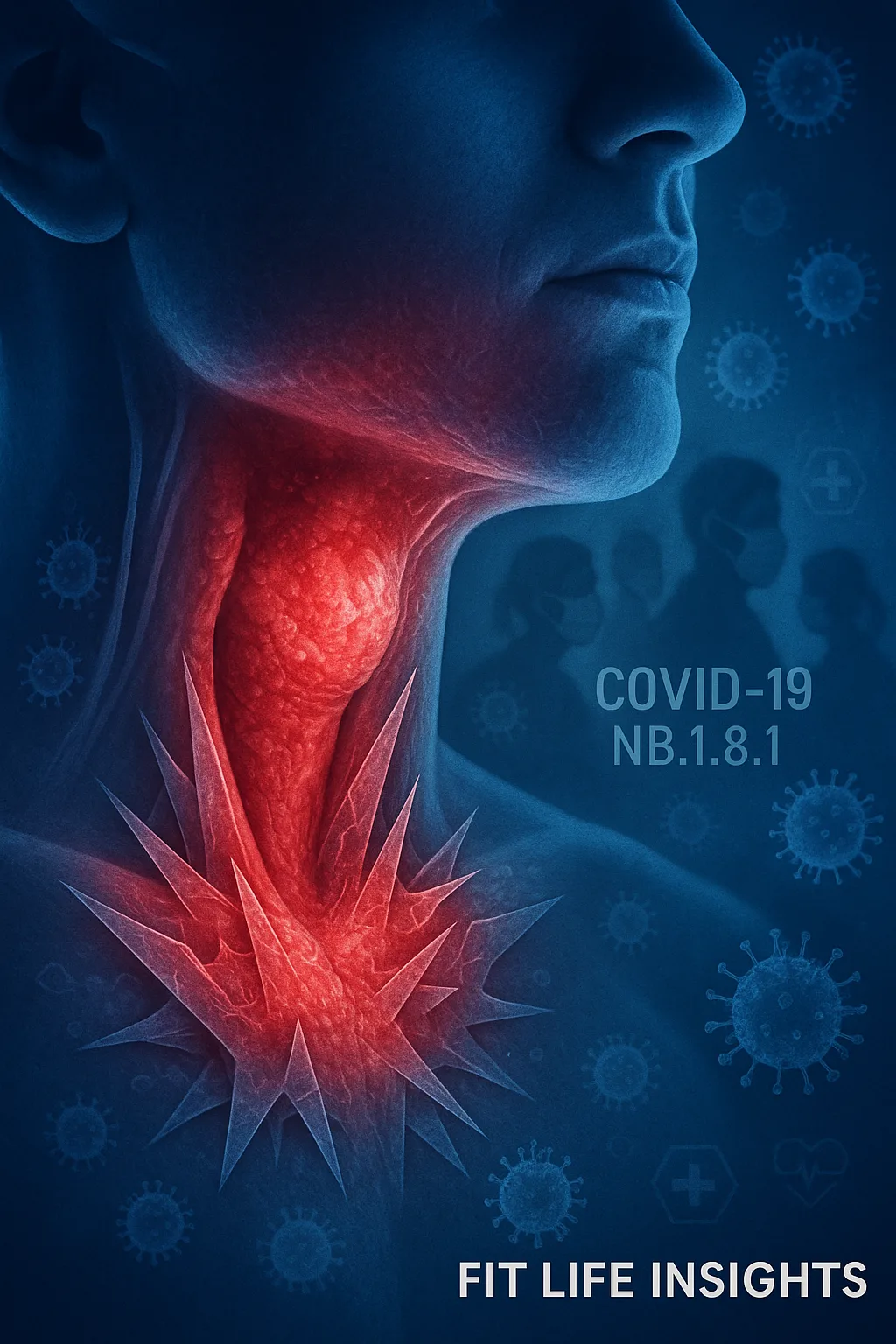Introduction
Imagine swallowing a shard of glass━your throat searing with every swallow. That’s exactly how many describe the Razor Blade Throat – the shocking hallmark of the latest Omicron subvariant NB.1.8.1, also called “Nimbus.” As this ominous strain carves through communities across the world, it demands more attention than ever before. How worried should we be? And what steps can we take to protect ourselves?
Continue reading this comprehensive exploration that peels back the layers of Razor Blade Throat, delivering a well-researched, deeply informative account of its symptoms, spread and precautions. Join us on this journey through one of COVID-19’s most unsettling developments.
What is Razor Blade Throat & How Did It Emerge?
The term Razor Blade Throat isn’t hyperbole━it’s chillingly literal. This descriptor surfaced as patients with NB.1.8.1 experienced throat pain so intense it felt like swallowing glass or razor blades.
Emerging from a mutation of Omicron, N.B.1.8.1━colloquially “Nimbus”━first surfaced in January 2025, later earning the WHO’s label of “variant under monitoring” due to its spike-protein mutations and rapid global proliferation.
Remarkably, this subvariant jumped from just 2.5% of global sequences in March to roughly 11% by mid-May, primarily igniting in Asia and spreading swiftly across Europe and North America. In the U.S., it now constitutes nearly 37% of cases━with projections showing it overtaking other strains and gaining dominance by summer’s end.
Distinctive Symptoms of Razor Blade Throat
While NB.1.8.1 doesn’t necessarily bring heightened danger, its signature symptom━Razor Blade Throat━is uniquely alarming:
- Intense sore throat described as shards of glass or razor blades lodged in the throat
- Classic COVID-19 symptoms: fever, chills, dry cough, loss of taste or smell, fatigue, muscle aches, congestion
- Occasional digestive distress: nausea and diarrhea
Notably, up to 70% of COVID -19 patients report sore throat, but Razor Blade Throat takes it to and extreme━blocking hydration, speech, and comfort. Despite its dramatic manifestation, clinician experts like UCSF’s Dr. Peter Chin-Hong clarify that the pain is not unique to this variant but has become more frequently reported with Nimbus.
How Fast Is It Spreading & Where?
The surge in NB.1.8.1 is both swift and widespread:
- Global prevalence: surged from 2.5% in March to ~11% by mid-May
- In the U.S.: accounts for an estimated 37% of COVID-19 cases; states like California showing levels as high as 55%
- Regional hotspots: Detected widely in California, New York, Washington, and abroad in the U.K., India, China, Southeast Asia, eastern Mediterranean
Wastewater surveillance echoes the trend━showing infection spikes that sometimes precede clinical case counts.
Severity: Should We Panic?
Despite the dramatic throat pain, there’s reassuring news:
- No sign of increased severity: Experts emphasize hospitalizations and deaths remain stable compared to previous variants
- Mild to moderate disease profile: Most cases don’t escalate beyond upper respiratory symptoms
- Persistent risk for the vulnerable: Elderly and immunocompromised individuals remain susceptible to severe outcomes
In short, Razor Blade Throat hurts like hell━but it hasn’t proven deadlier. Still, fear shouldn’t blunt informed caution.
Testing, Treatment & Home Care
When faced with Razor Blade Throat, here’s what to do:
- Test promptly━PCR or antigen tests can differentiate from strep throat or other pathogens
- Symptomatic relief:
∘ OTC pain relievers (ibuprofen/acetaminophen)
∘ Throat lozenges, sprays, warm tea with honey, soups, ice chips
- Hydration & rest: Critical for throat comfort and recovery
- Watch red flags: Symptoms like difficulty breathing, throat pain over a week, weight loss, or food refusal require medical attention.
Prevention & Vaccine Efficacy
Defensive measures against Razor Blade Throat remain the same:
- Vaccination: Current 2024-25 COVID-19 vaccines continue protecting against Nimbus’s symptomatic and severe effects
- Masking: N95 or well-fitted masks in crowded indoor spaces cut transmission risks
- Hygiene: Frequent hand-washing and cleaning of surfaces
- Ventilation & distancing: Enhancing airflow indoors and avoiding close contact during surges
Criticism of reduced vaccine guidance for children and pregnant individuals underscores the need for targeted vigilance for high-risk groups.
Final Thoughts
The Razor Blade Throat phenomenon is a brutal, visceral symptom tied to the rapid ascent of the NB.1.8.1 “Nimbus” variant. While its signature pain is alarming, the broader picture remains reassuring: though highly transmissible and immune-evasive, Nimbus isn’t markedly more dangerous than its predecessors.
Still, intense throat pain should prompt testing and care. And as summer travel surges, staying “COVID street smart”━with masks, vaccines, and hygiene━remains essential. After all, even mild variants can strain health systems when spread is rampant.
Key Takeaways
- Razor Blade Throat is the defining symptom of NB.1.8.1━described as razor-like pain experienced by many.
- The Nimbus variant jumped from 2.5% to ~37% of U.S. infections within months.
- Typical COVID symptoms still apply: fever, cough, fatigue, congestion, sometimes nausea.
- No increase in severity, but the symptom can be severe━stay alert for red-flag signs.
- Vaccines remain effective, plus masking, hygiene, and ventilation are critical defenses.
- Strong care measures: test early, rest, hydrate, use OTC remedies, and seek help if needed.
Disclaimer: This blog post is for informational purposes only and does not substitute professional medical advice. For personalized guidance, consult a qualified healthcare provider.

